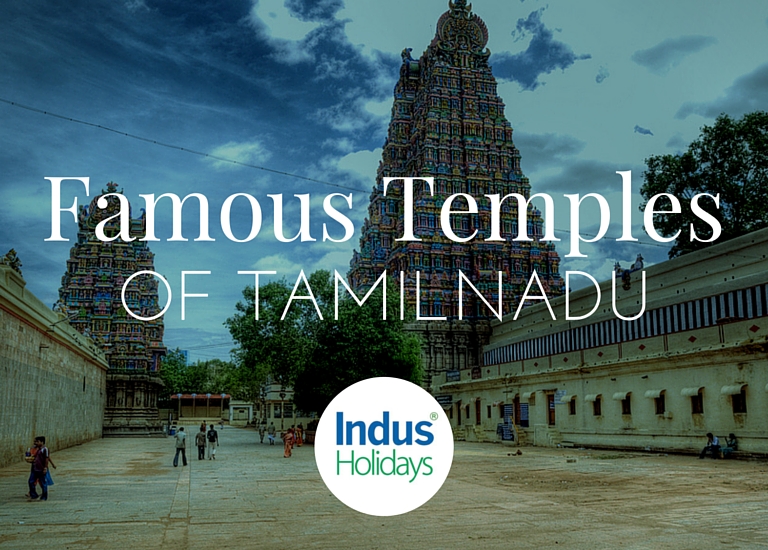
For the spiritually inclined, there is no dearth of places where one can find inner peace. Stretching from the Himalayas to Kanyakumari, India remains a land of intense spirituality and religious faith. Hailed in scriptures and deified though majestic shrines, Tamil Nadu in many ways is a celebration of the divine. Besides being timeless architectural wonders, these hallowed spots reverberate with a primordial energy that can drown out the hubbub of pilgrim traffic.

What makes Tamil Nadu truly special is not just the plethora of temples related to the legends the of gods but the thematic spiritual circuits that criss-cross the land and the strong influence of these consecrated spaces on the lives of the locals

Most temples in this region are built in honour of Shiva, Vishnu and their consorts. Besides being sites to experience India’s ancient architectural art fashioned by the hands of men, they are living museums with constant activity which showcase the regions cultural heritage. In this article, we discuss the uniqueness of ten spectacular temples, introduce four spiritual circuits and share some practical tips along the way. Before we embark on a captivating journey into the historical world, let us you give some context on the architecture and timeline.
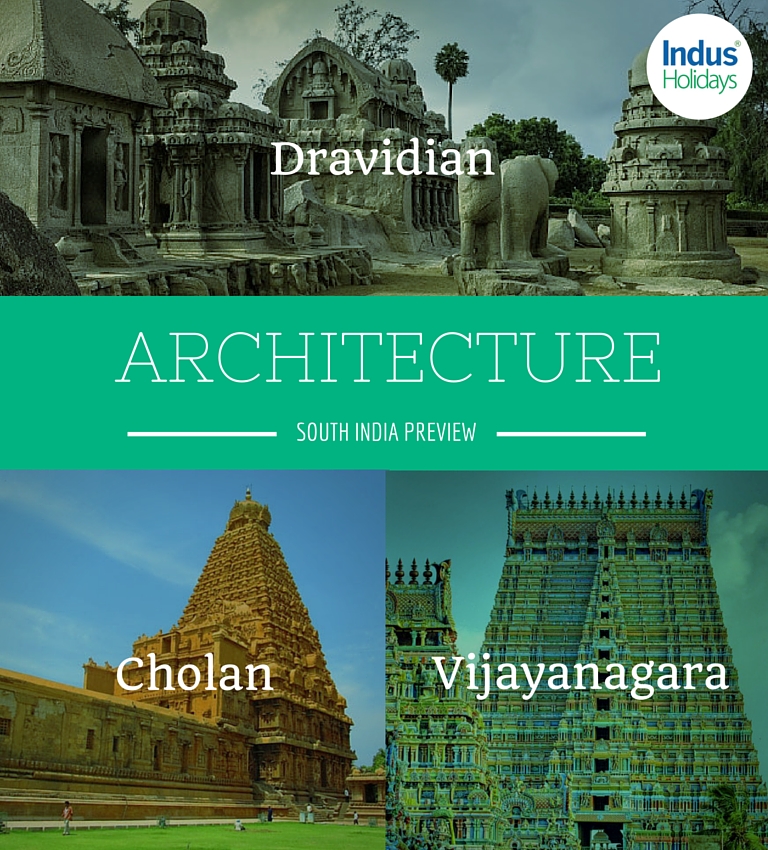
The timeline of temple architecture in Tamilnadu interestingly catalogues the tastes of successive dynasties. The 7th – 9th century under the Pallava rule saw modestly scaled hindu temples being hewn out of caves. This sculptural skill was transferred to rathas and freestanding temples carved out of single rocks that is broadly called Dravidian Architecture. Mamallapuram is the home town of the Dravidian style. It was subsequently the Shaivite Cholas who spearheaded Tamilnadu’s next architectural phase. The 10th -13th century structures of the Cholas focussed their attention on sculpting soaring Vimanas (stories above main shrine) and massive walled courtyards. The Brihadeshwara temple at Thanjavur is the principal of this style.

The heritage structures (especially temples) are a product of generations of work because of which their antiquity decreases from the inside out. The central most structure of the temple, the sanctum sanctorum will be the oldest and as we move outwards, the structures could be relatively new.

The pioneering efforts of the early rulers to create a distinctive Tamil style reached a dramatic climax post the 13th century. The Vijaynagara kings saw how temples were central to city life and created facilities for civic meetings, education and theatre. Tanks, massive series of prakaras or courtyards and the majestic towering Gateway towers are hall marks of this style. The Madurai temple is the epitome of Vijayanagara architecture. As curious as it may seem, a north to south road trip through Tamilnadu is actually a journey in time which shows how the Tamils evolved into the most innovative temple builders. Let us embark on the same starting from the shores of Mamallapuram.
The Shore/Cave Temples of Mamallapuram
On the hill overlooking the Bay of Bengal, the Mamallapuram town is home to heritage temples and rock-cut sanctuaries that inflame our imagination. Dated back to the 7th century the most noted temples here are the beautiful Shore temple, the intricately carved Mahisasuramardhini cave temple and the stone chariot temples. Many of these mandapas have their roots in Buddhist/Jain faiths that later inspired Chola architecture.

These UNESCO world heritage temples have braved an angry sea and erosive salt air for over 1200 years. Though the external carvings have been extensively worn, they are among the last of its kind to remain intact.

Among the temples, the shore temple built during late 7th century is a shining example of Pallava legacy. We enter from the west towards low-walled enclosures bordered with stone-carved nandi figures to enter the main temple. The temple has two Shiva shrines and a reclining Vishnu sandwiched in between. Shiva the destroyer faces the dangers of the sea while Vishnu the preserver overlooks the town. The evenings give the temple an unmistakable aura.
Interesting anecdotes
- The shore temple spires are tapered and it is believed that, in the days of yore, it was also used as a lighthouse with a fire burning at its apex.
- Legend has it that seven such temples once dotted Mamallapuram’s shores. Visible to ancient mariners from far at sea, the port was known in old times as the City of Seven Pagodas. Over time, six were reclaimed by the sea and just one pagoda now exists in the form of the twin spires of the Shore Temple.
How to Reach
Mahabalipuram is about an hour away from Chennai. While here besides the temples visit historic monuments like Krishna’s butter ball (defies gravity), Tiger cave and Arjuna’s Penance (stone wall carvings).
Kailasanathar Temple, Kanchipuram
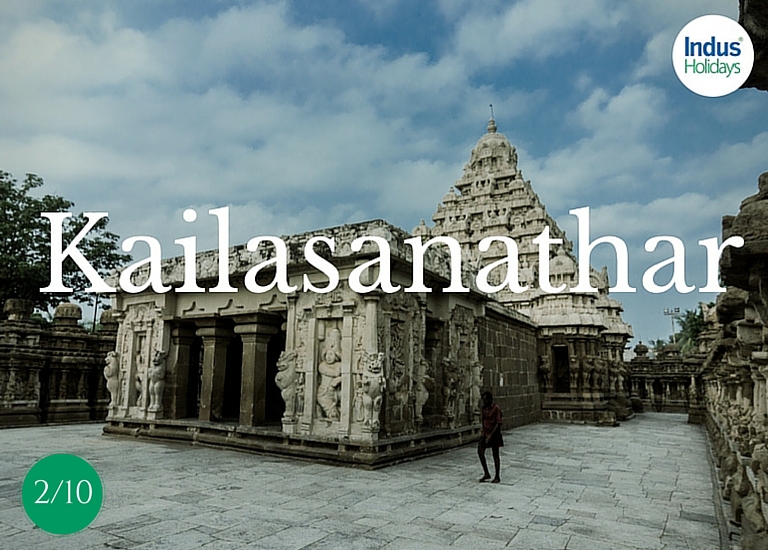
Set against sprawling lawns under the benign gaze of a massive Nandi stands the oldest Dravidian temple of its time. The trendsetting squat sandstone complex of the Kailasanathar (Shiva) was constructed as a royal shrine during 685-705 AD by the Pallava Dynasty. The temple is noted for its carvings depicting half-animal deities and the 58 sub shrines that surround the main temple.

Kailasnathar is the first structural temple built in South India, a worthy successor to temples built of wood or hewn into rock faces in caves as seen in Mamallapuram

Today only a few alcoves with traces of the ancient 8th century vegetable dye painted murals remain. However, the wealth of detailed carvings of Lord Shiva manifestations like Ardhanrisvara, Lingodbhava, Nataraja and Dakshinamoorthy can keep one captivated for hours. There is so much to observe and articulate inside this temple.
Interesting anecdotes
- You wouldn’t be surprised if we tell you that this splendid sanctum spire inspired Rajaraja Chola to build the iconic Brihadeshwara Temple in Thanjavur
- While pillars of seated lions are common, the grimacing lions which stand on their hind legs as if ready to pounce is seen as a symbol of aggression of the empire
- Perhaps the most intriguing feature of the temple is the narrow passage around the deity where devotees crawl into a hole to the left and emerge to the right. This is seen as an act of rebirth or moksha. There are also other secret tunnels in the structure which serve as escape routes
How to Reach
The temple is in Kanchipuram (80km from Chennai) and 3 km from the bus stand on the western edge of the city. Also visit the Ekambaraswarar Temple just 2 km away which is the largest temple in Kanchipuram.
Thillai Nataraja Temple, Chidambaram
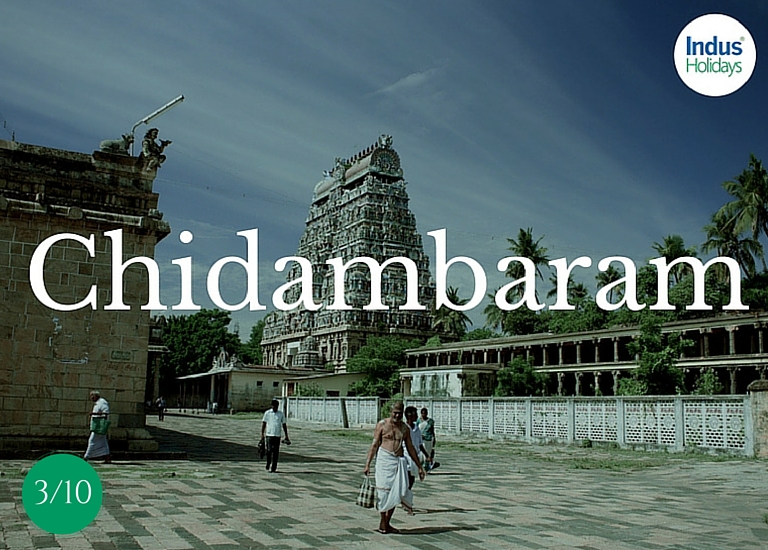
Chidambaram’s claim to fame is the temple of Nataraja where Lord Shiva appears as the Cosmic Dancer. Besides being one of the holiest of Shiva sites, the temple happens to moonlight as a Dravidian architectural fantasy too. Spread over 51 acres, every space in the Thillai Nataraja Temple is nuanced with meaning and symbolism.

During the daily rituals, the chief priest parts the dark curtain which indicates withdrawal of ignorance and reveals empty space. Only a strand of 51 golden vilva leaves indicate the Lord’s presence. The idea is that we focus our consciousness (chitt) on a formless space on a stage (ambalam). This is from where the place derives its name.

At different times, the golden roofed sanctum of Chidambaram houses the lord as a different presence – in form as Nataraja and formless as Space. The anthropomorphic form has Lord Shiva as the cosmic dancer- ending one cycle of creation and beginning another. In the formless nirakaar presence, we worship empty space. This the beauty of the concept of ‘Chidambara Rahasya’.
Interesting anecdotes
- Unlike other Shiva temples in Tamilnadu which follow agamic rituals based on Sanskrit scriptures, at Chidambaram, Vedic rituals set by sage Patanjali are followed. This reflects on the age of the temple. The Kanaka Sabha (Golden Hall) is venue to daily vedic rituals which are centred on fire sacrifice (yagna) which is headed by the Dikshitars. Everyone is allowed to witness these ancient rituals.
How to Reach
Chidambaram is around 190km from Chennai, located near Kumabakonam. Regular buses are available from Chennai CMBT bus stand, journey takes around 5 - 6 hours.
Annamalaiyar Temple, Tiruvannamalai
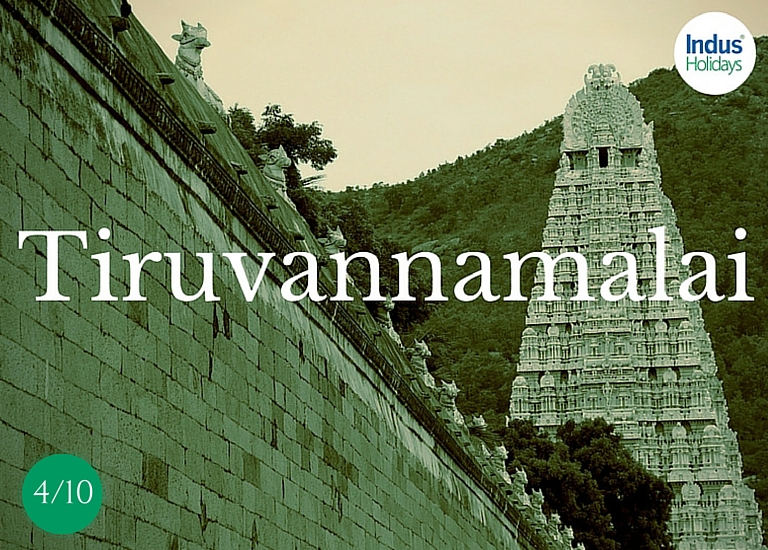
Tiruvannamalai is the spiritual hub of South India centred around the Annamalaiyar Temple where Lord Shiva is worshiped as an Agni lingam (Fire). In the background, the mystical Mount Arunachala or Annamalai glints in the rays of the rising sun. It is considered as holy as the temple that lies at its base. Tiru's reputation for strong spiritual energies has produced numerous ashrams of enlightened gurus.

This holy town has a strong spiritual energy about it, especially from some of the meditation caves in the mountain. Similar vibrations can also be felt emanating from the hot traditional-lamp-filled inner sanctum of the temple.

The temple’s basic structure is traced backed to the Chola dynasty in the 9th century while later expansions are credited to the Vijaynagara rulers (13th -16th century). The complex is 10 hectares large with nine towers and three inner courtyards. Its 11 stories high Rajagopuram (217ft) is among the tallest in the country. It is one of the Pancha Bhoota Sthalams.
Interesting anecdotes
- Geologists claim this to mount to be older than the Himalayas and an extinct volcano. The history is tracked from BC 100 Tamil Sangam Age
- An elaborate series of rituals are followed even today beginning with the processional delivery of water by the temple elephant
How to Reach
The town of Tiruvannamalai is around 200km from Chennai and well connected by road and train. Its connection to Bangalore is through NH 66 (Bangalore -Pondy Highway), 40 km from Gingee and 106 km from Pondicherry (2 hrs). Regular buses ply from Chennai Bus stand, the journey takes around 5 to 6 hours.
Spiritual Circuit: Pancha Bhoota Sthalas
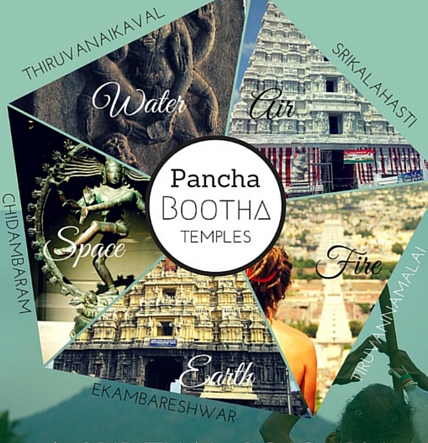
Price
On Request
Pancha Bhoota Temple Tour
A trip to five ancient Shiva Temples each built for his manifestation as one of the five elements of nature
Destination: Kanchipuram, Srikalahasti, Chidambaram, Tiruvannamalai & Trichy
Time: Any time of the year
Duration: 5 Nights & 6 Days
All these temples are geographically located within the Deccan Plateau – one in Andhra Pradesh and four in Tamil Nadu. Each of the five elements of nature are believed to be enshrined in five lingams at these divine spots
Key Highlights:
- Discover stories behind the legends of these ancient temples and connect with its manifestation in reality. We even have stories which span across generations!
- Experience natural and supernatural phenomena which have made these temples very famous. Thiruvanaikaval has a water spring below the linga and Srikalahasti has flickering lights in a closed chamber!
- Rely on our expertise to experience some of the unique traditions of these ancient temples like noon puja at the Jambukeshwara or veda chanting at Chidambaram.
Already thinking of a trip to the Pancha Bhoota Sthalas? Would you like us to customise a trip for you around this spiritual circuit?
Brihadeeswarar Temple, Thanjavur
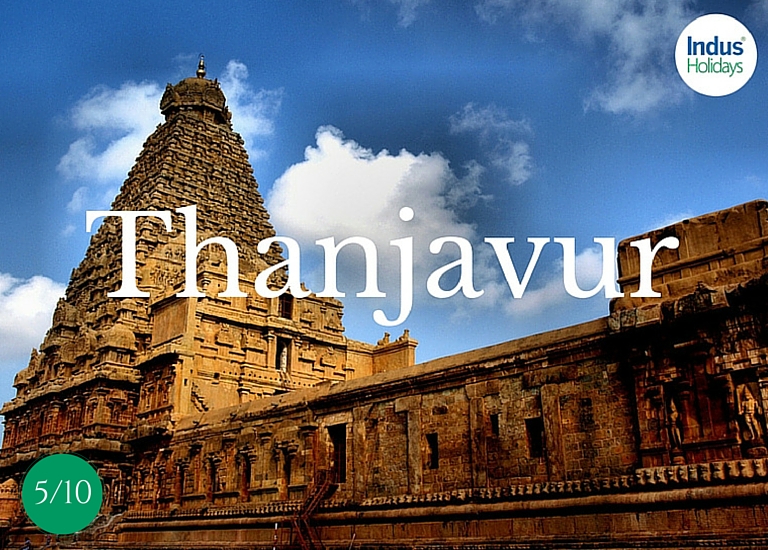
The Brihadeeshwara temple in Thanjavur is a landmark in many ways. Built on a monumental scale of ten times larger than anything of its times, this symbol of Chola power is one of the most prized architectural sites in India. This epic vision of emperor Raja Raja Chola 1 became a reality in 1010 AD. It is the world’s first temple constructed solely out of granite and adorned with giant sculptures both inside and outside.

The sounds of history reverberate in this thousand-year-old world heritage site called Periya Kovil (Big temple). For some context, the temple houses a 13 ft tall mahalinga, has the tallest vimana in South India and at a time even boasted of the largest elephant who greeted visitors at the arched gate!

As we walk into the fortified temple complex, the Chola stamp in unmistakable. Unlike other shrines, the entrance gopuram is a squat structure much smaller than inside spires, reserving all the glory for the vimanam or superstructure above the gods. From every angle, the 66 m high Vimana with 13 tiers towers majestically like Mount Meru, Lord Shiva’s abode. There is much history to be discovered through the paintings and inscriptions on the walls of this legendary structure.
Interesting anecdotes
- The Shikhara (apex), the 81 ton crowning glory of the temple is carved out of a single rock and was fixed in place by pushing it up an incline that started 6 km away
- This ambitious building project was completed in just six years. This means moving about 50 tons of granite everyday not to forget carving and aligning it. The absence of a granite quarry in 60 km radius of the temple gives an idea of the epic proportions of work gone into creating this wonder.
- It is uncanny to see wall-to-wall Marathi inscriptions in the heart of Tamil Nadu. The history of the ruling Bhonsle dynasty inscribed on the temple’s south-western wall is believed to be the lengthiest inscription in the world.
How to Reach
Thanjavur is connected by air to Trichy (65 km away). The place can also conveniently be reached through its well-connected rail and road networks with cities like Chennai, Madurai and Trichy.
Heritage Circuit: UNESCO Temple Sites
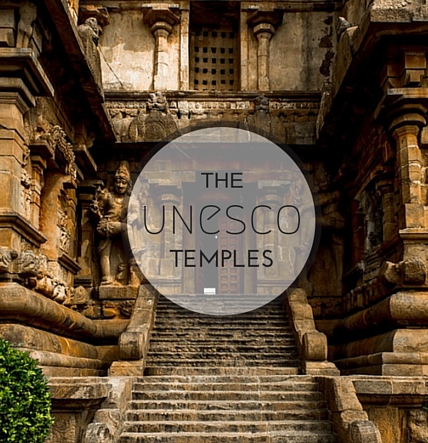
Price
On Request
UNESCO Heritage temple tour
A trip curated for heritage lovers covering two heritage sites in Tamil Nadu and nearby temple towns
Destination: Thanjavur, Kumbakonam, Kanchipuram & Mamallapuram
Time: Any time of the year
Duration: 5 Nights & 6 Days
Besides the Great living Chola temples and Mamallapuram which are UNESCO heritage zones, the nearby Kumbakonam and Kanchipuram are fabulous places for temple hopping.
Key Highlights:
- Kumbakonam town has 18 temples. If you only have time to see a few, the Sarangapani Temple (dedicated to Lord Vishnu) is the most impressive, with a shrine in the form of a chariot.
- While Tanjavur Brihadeshwara is frequented by travellers, the related temples of Gangaikonda Cholapuram and Airavateshwara are more intricately worked on. The trip takes you to the lesser known gems of the region.
- Kanchipuram gives you an opportunity beyond the temples to see the art of making handloom silk sarees
Does a mix of heritage sites and immersive local experiences interest you? Check out our customisable tour package designed on this heritage circuit.
Sri Ranganathaswamy Temple, Trichy
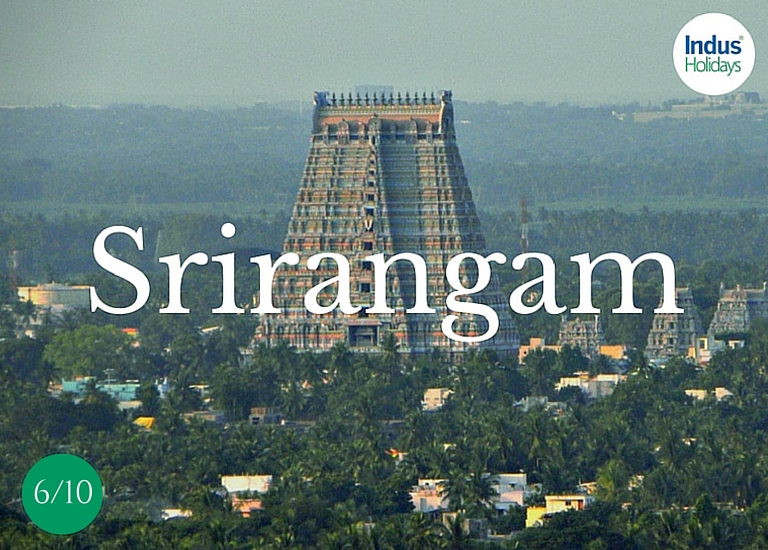
Everything about this temple is larger than life. Located on a small islet formed between the Killidam and Kaveri rivers, the Ranganathaswamy temple is a mammoth 156 acres complex which as 21 gopurams (towers) and 53 sub-shrines. Among the 108 divya deshams, the idol here is a 21ft/6.4 m statue of Lord Vishnu reclining on snake Anantha (Anathashayanam). It will take at least half a day to explore this masterpiece of Dravidian style architecture.

Among the foremost of Vaishnava sites, the Srirangam temple is the largest functioning hindu temple in the world and also houses the tallest temple tower in the country (236 ft)

The most fascinating aspect of this temple is the vibrant life around the temple. Small groups doing bhajans, the outside prakarams lined with houses and shops, it is a culture fest! Among the sights within the complex include the eight-monolithic pillars with sculptures of warriors astride rearing horses. On either side are thousand pillar mandapams with 953 surviving pillars. The ivory museum in the fifth enclosure with antique Tanjore art is certainly worth a peek. Even the Garuda statue here is awe-inspiring!
Interesting anecdotes
- This one-of-a kind temple is enclosed in seven concentric rectangular enclosures or prakaras. The saptha prakaras represent the seven chakras or nodal energy centres of the human body.
How to Reach
It is well connected by air with Trichy airport being the nearest. Srirangam also has a rail station which is connected by the Chennai-Kanyakumari track (approx. 5 hrs from Chennai). Also don’t miss the spectacular Rockfort temple which affords a panoramic view of the town.
Vaitheeswaran Temple, Vaitheeswaran Koil
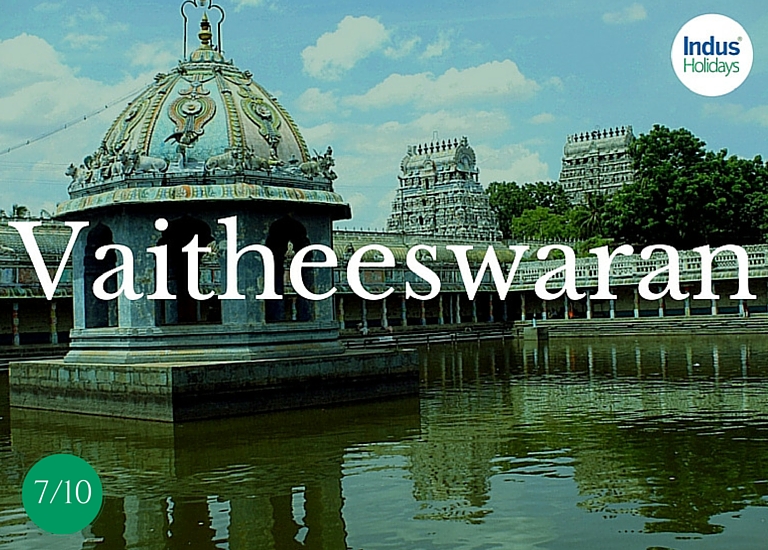
The legend has it that this was the spot where Angaraka (Mars) was cured of leprosy. Hence, Lord Shiva is worshiped here as the “God of healing” or Vaitheeswaran. Devotees offer milagu (pepper), salt and Jaggery & take a dip in the waters of the Siddhamritham tank. They pray here for relief from various ailments, boils and scars. The lord’s consort Thaiyalnayaki Ambal stands holding a bottle of medicinal oil to cure all diseases.

This temple which houses the “God of Healing” is also one of the nine Navagraha temples. The town is also renowned for its Naadi Astrologers.

The beautiful temple is enclosed within tall granite walls in the centre of the town. The majestic towers and big corridors for the main deities are noteworthy. The unique Dhwajastambhas (pillars), one of silver and one of gold near the western entrance adorns the temple.
Interesting anecdotes
- The temple is one of the nine Navagraha temples. It is associated with the planet Mars (Angaraka).
- This town is famous also for "Nadi Josiyam" or Naadi Astrology, a type of foretelling by scanning the ancient palm-leaf ("Olai Suvadi", in Tamil) scriptures.
How to Reach
Vaitheeswaran Temple is located near Sirkazhi, and is about 24 km from Chidambaram, 50 km from Kumbakonam, and 4 km from Mayiladuthurai on the Chidambaram Road.
Spiritual Circuit: Navagraha Temples
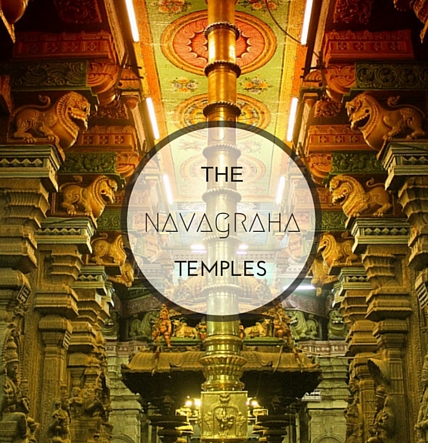
Price
On Request
Navagraha temple tour
A trip covering the cluster of nine temples which represent the planets in the solar system
Destination: Trichy and Kumbakonam
Time: Any time of the year
Duration: 3 Nights & 4 Days
As per the hindu belief system, the planets have divine power and influence human life. Besides the religious importance some of these temples are renowned for their unique architecture too
Key Highlights:
- Most of the temples are located in the Kumbakonam-Trichy belt are ancient temples which date back to the Chola dynasty
- Each of these temples are known for curing different ailments or doshas as per astrology. Particular cures are related to marriage, childbirth, skin diseases and the like.
Has a journey to such unique temples been on your bucket list? You can cover the famous temples of Kerala & Tamilnadu on this tour.
Meenakshi Amman Temple, Madurai
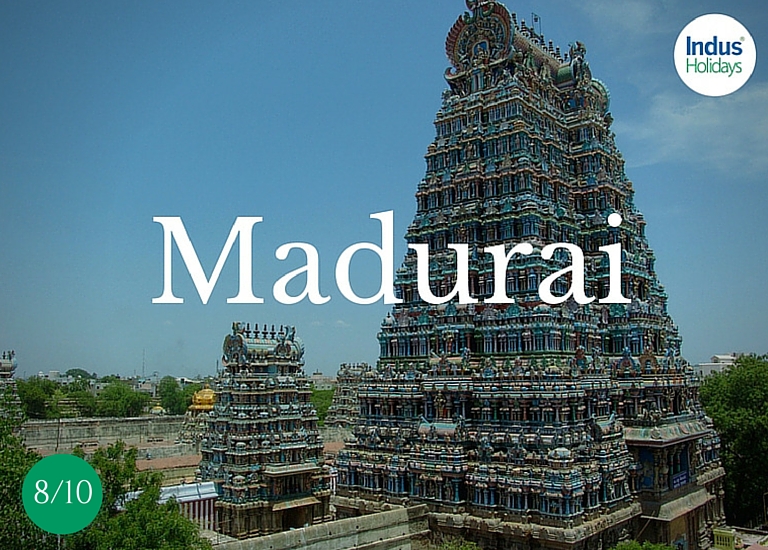
Fondly called ‘Athens of the east’, the ancient city of Madurai is beautifully laid out on the banks of river Vaigai and has 2600 years of traceable history. The iconic temple in town (abode of the ‘Fish eyed’ warrior Goddess Meenakshi) has between 15k to 25k visitors every day. The original temple was built by the Pandyas but the entire credit of today’s grandeur goes to the majestic imprint of the Nayaks between the 16th and 18th centuries.

If you see only one South Indian temple, the Meenakshi-Sundareshwar temple should be it. The shrine and ancient city of Madurai is considered by many to be as vital to the aesthetic heritage of this region as the Taj Mahal is to North India

Within the 16-acre temple complex are 4000 monolithic pillars, 14 towers and several mandapams. Enriched with stucco figures and awash in deep blue, green and red, the massive towers (160 ft south tower being the tallest) can been seen from miles away. It is customary to offer prayers to the emerald idol of goddess Meenakshi before visiting the Shiva shrine. The good views of the two golden Vimanas from the Pottramari tank and the bustle of ash-smeared swamis in corridors performing pujas and vedic chantings are a must experience. Every mandapam or pavilion from the Aayiram Kaal Madapam (1000 pillar halls) to the Killi Kootu Mandapam has an interesting history of its own and give opportunities for rich cultural exposure. If your heart still wants more, visit the in-house museum and jump into the region’s 2600-year-old history.
Interesting anecdotes
- The temple was one of the top 30 nominees for the New Seven Wonders of the World
- The 9 pm ritual where the idols and Shiva’s slippers are carried in a palanquin to the bed chamber where priest perform lalipuja (lullabies) is a unique event to experience in the temple.
- The 12 day Chithirai Festival in April which re-enacts the celestial wedding of the temple’s god and goddess is the grandest event of the year
How to Reach
Madurai is easily accessible from both Munnar and Thekkady in Kerala. The city has its own domestic airport and is well connected road and rail with all major cities in South India.
Ramanathaswamy Temple, Rameswaram Island

The sanctity of the 12th century Ramanathaswamy temple can be gauged from the fact that is it the only Jyothirlinga in South India and that it is one of the four dhams (holy hindu sites) in India. The temple also reveals a mingling of faiths where Lord Rama worshipped Lord Shiva. The region has a special space in Hindu mythology too as it was from here Lord Rama build a bridge across the sea to rescue Sita from Sri Lanka. Rameshwaram is amongst the foremost pilgrimage sites in the country.

One of the Char Dham spiritual sites marking the four cardinal directions in India, the conch shaped island of Rameshwaram is special. The awe-inspiring temple also features the longest temple hallway in India with 1212 intricately designed granite pillars.

Your journey here starts with a ritual bath at the Agni Theertham (100 m away) and entry through the eastern gate. Pilgrims bath with water from the 22 holy wells with each well water having different taste and therapeutic properties. There is also a short cut in the eastern gateway with water collected from all pools. After visiting this stunning temple complex, the lost lands of Dhanshkodi and Adam’s bridge are must visits.
Interesting anecdotes
- It is difficult to rationalise 22 closely located wells with water in them having totally different tastes. This along with many other miracles contribute to the charm of this holy site. The 31 site mythological ‘Rama Trail’ which is scattered around the shrine is an important hindu spiritual circuit.
- Ironically, it was a (Sri) Lankan king who built the sanctum sanctorum around the moolainga of Lord Rama, Sri Ramanathaswami.
- The third outer corridor lining the perimeter and stretching 210m/690ft from east to west, is the famed longest temple corridor in the world. The 22ft- high lofty corridor is lined by 1,212 granite pillars with statues of the king and ministers. Also notice the mesmerizing painted ceilings.
How to Reach
Located at the tip of the Indian Peninsula, it is connected to the mainland by one of the longest bridges in India. A trip here can be easily planned from Madurai (170 km) or Kanyakumari (310 km) as part of a temple tour.
Murugan temple at Palani Hills
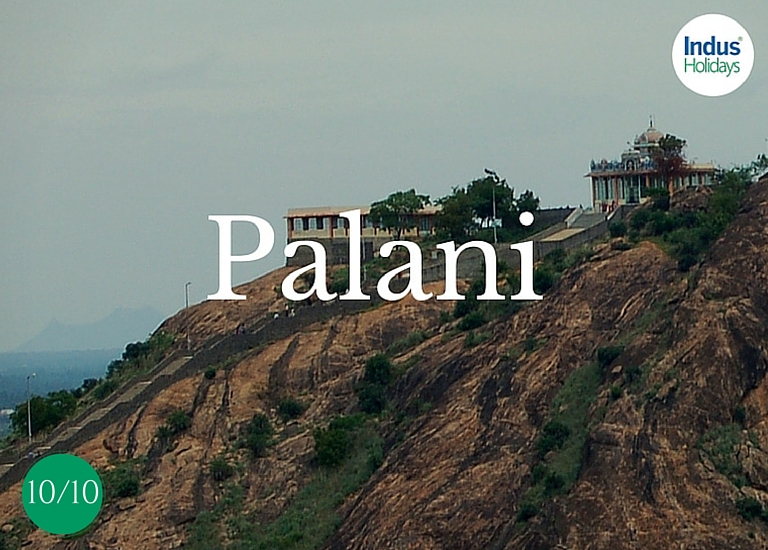
One of the six abodes of Lord Murugan, Palani traces its origins to a curious myth of sibling rivalry. It is said that in a dispute with brother Ganesha, they challenged each other on who would traverse around the world quicker. Murugan set off from Kailash on his peacock while the willy Ganesha merely circled his parents thrice as he considered them his universe. Ganesha was adjudged winner which miffed Murugan. He left Kailash to settle down in these hills in the south.

The impeccable peace, spectacular views and meditative air of the hills is Palani’s charm. It is the most famous of the six abodes of Lord Murugan

Around 650 steps lead up to this ninth century hill- temple perched at 1,500 ft. The temple which was built by Cheraman Perumal offers spectacular views of the hill range and paddy fields below. The shrine houses a unique idol of Murugan as Dandayudhapan or “Lord with the wooden staff in hand”. A good time to visit is during the Thaipusam festival in when 2 lakh pilgrims celebrate the legend of the temple carrying Kavadis or wooden baskets.
Interesting anecdotes
- The idol of the deity is said to be made by combining nine poisonous herbs which forms an eternal medicine when mixed in a certain ratio. The abhishekam water from the sandalwood paste placed on the idol overnight is said to acquire medicinal properties and it is the most sought after by devotees (called rakkala chandanam).
- One curious aspect of the deity is that idol faces west rather than east which is the traditional direction at most Hindu temples. This is because the temple was built by the cheras whose dominions lay to the west.
- As per the legend, Shiva pacified the lord saying that Murugan himself (nee -you) was the fruit (pazham) of all knowledge. Thus the place Murugan settled down was called “Pazham Nee” or Palani.
How to Reach
Palani’s nearest airport is Coimbatore (100 km) and it is connected by rail through Palani station stretching Madurai to Coimbatore. Kodaikanal, the beautiful hillstation is about 64 km from Palani.
Spiritual Circuit: Arupadai Veedu

Price
On Request
Arupadai Veedu temple tour
A trip covering the six sacred shrines dedicated to Lord Murugan in Tamilnadu
Destination: Palani, Swamimalai, Tirchendur, Tiruttani (near Chennai) and Tirupparankundram and Pazhamudircholai (near Madurai)
Time: Any time of the year
Duration: 5 Nights & 6 Days
Each one of the six abodes of Murugan has the benign lord in a different context when it comes to the legend behind the temple and also situated in unique locations – hills, shore or dense forest.
Key Highlights:
- The Aarupadai Veedu or Six Holy Abodes, also meaning battle camps, of Lord Murugan was declared by the famous Tamil poet Nakirar in the Sangam period classic of Murugan devotion
- Most of these temples are in hilly regions or constructed on artificial hills as Murugan is known as the lord of the mountainous region
If you are thinking of a trip covering Mysuru, Kodai, and the temples like Palani & Madurai, This tour might interest you.
Other Unique Spiritual spots in Tamil Nadu
The centrality of temple tourism to a Tamilnadu traveller goes way beyond these 10 temples and spiritual circuits. While we possibly couldn’t do justice to all the temples of the region, we feel there are three spots which need to be mentioned in this context more as spiritual spots rather than heritage temples.
Unique Spiritual Spots
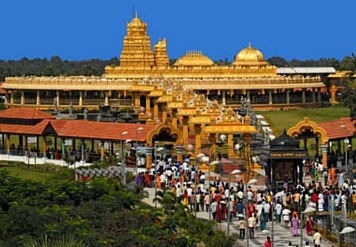
Golden Temple, Sripuram
The golden temple at Sripuram is a spiritual park at the foot hills of Malaikodi near Vellore. The specialty of Sripuram is the Lakshmi Narayani temple whose 'Vimanam’ and ‘Ardha Mandapam’ have been coated with gold both in the interior and exterior.
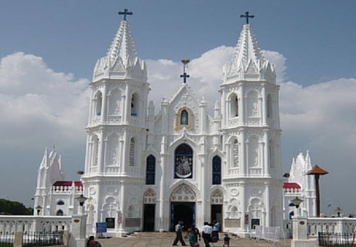
Velankanni
One of the most frequented Christian pilgrim centres in India, Velankanni draws nearly two million visitors of all faiths each year. The historic church of the Virgin (Kanni in Tamil) of Vela village owes its origins to three miraculous events including rescue of Portuguese sailors in a violent cyclone.
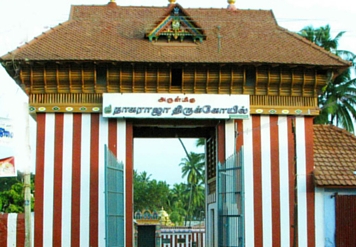
Nagaraja Temple
Located in Nagarcoil (southern Tamilnadu), the temple is dedicated to the snake god Nagaraja. The temple is full of images representing snakes and the vast pond in the middle is a uniqueness of it. The temple systems are unique and have Kerala influence.
Things to keep in mind while you visit Tamilnadu temples
While most temples in Tamilnadu give access to people from all faiths, the sanctum sanctorum in some temples are open for Hindu’s only. So pay heed to instructions related to access as people expect you to respect that. While there are no specific dress codes, choose to dress well covered while visiting the temples. Expect crowds, darshan may take a couple of hours of waiting in queues depending on the temple closing patterns and special poojas of the day.
Some final thoughts
When it comes to temples, it is about heritage, belief systems, architecture, culture and lifestyle all wound together in a multi-layered experience. Each time we go or hear about experience of travellers we feel it just get deeper.

Unlike sightseeing destinations, the temples are living museums and that is why even the experiences end up having dimensions beyond what can ever be planned for

We hope this article has been able to inspire, educate and entertain the seeker in you. Do share your thoughts with us by commenting below. Words can only do so much; the rest is for you to experience. Your moment is waiting!
Related Tour Packages
Related articles
New Articles
-
1
Apr 23,2019
Nehru Trophy Boat Race 2019: Booking Options
-
2
Apr 19,2019
Nehru Trophy Boat Race: The essential guide
-
3
Jan 19,2019
Everything you need to know about an Ayurveda Holiday in Kerala
-
4
Aug 10,2018
Thinking about Kerala for your next holiday? Start right here!
-
5
Jul 09,2018
Ten secrets to a fascinating backwater experience: Discover it!
Send An Enquiry
WE ARE SOCIAL, LET’S CONNECT

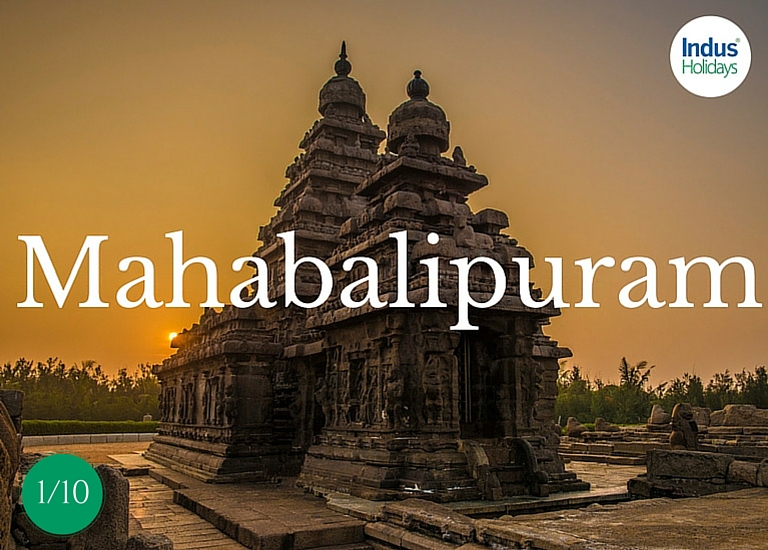
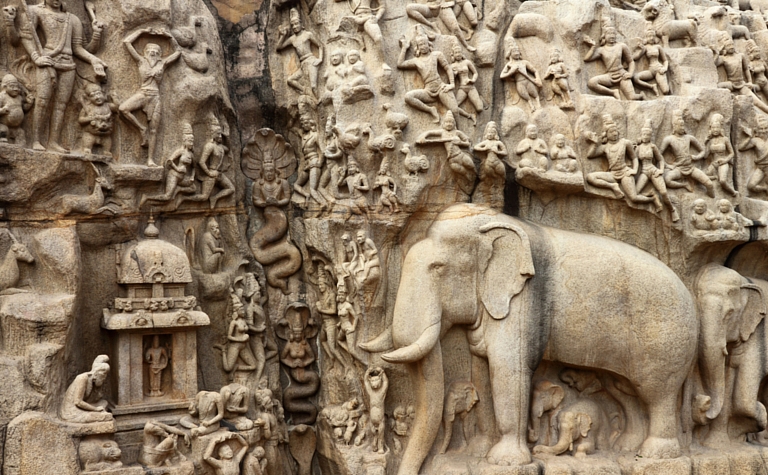
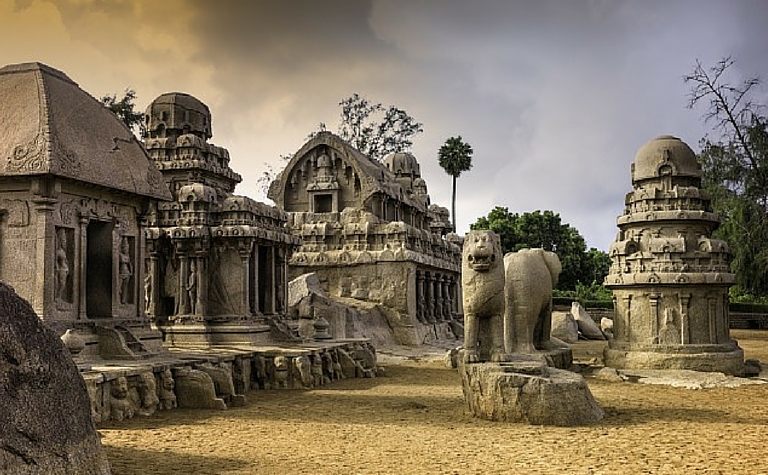
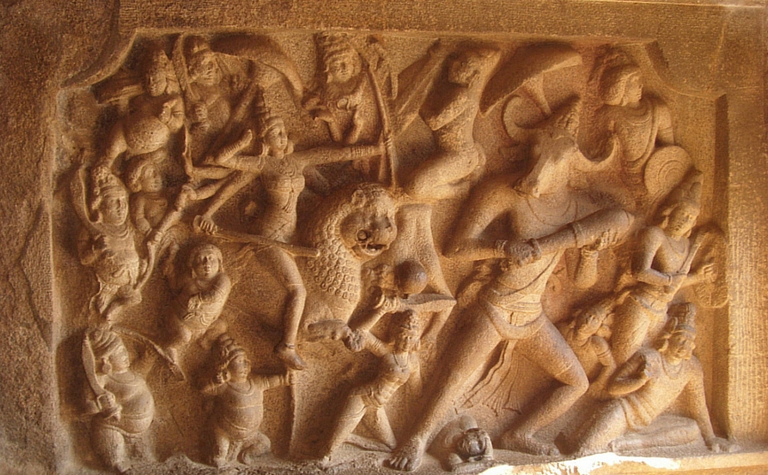
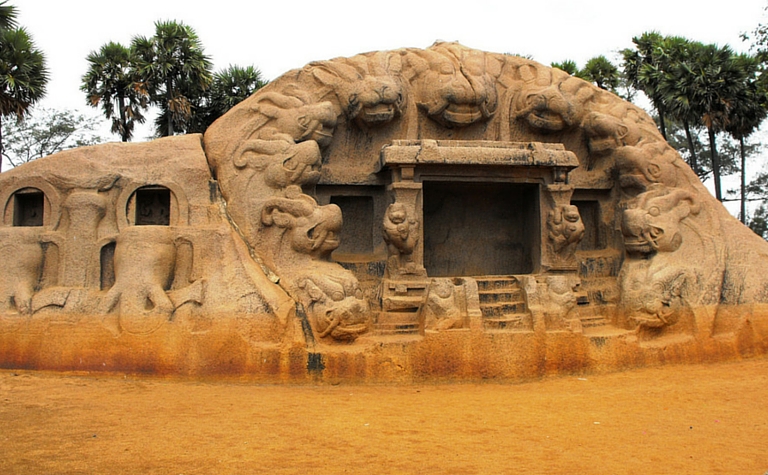
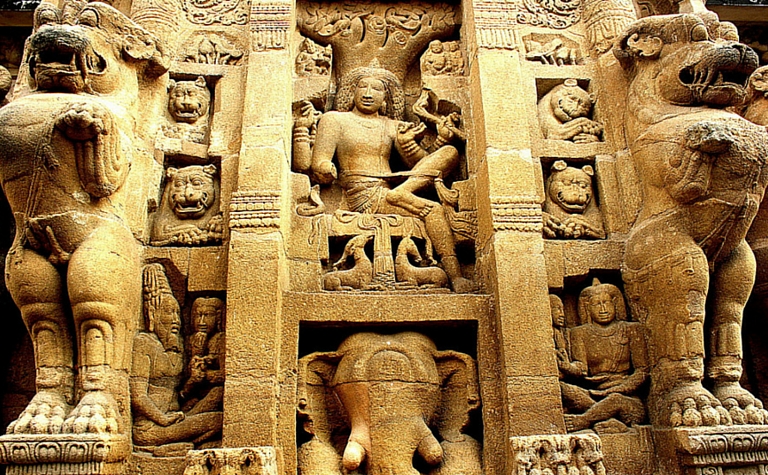
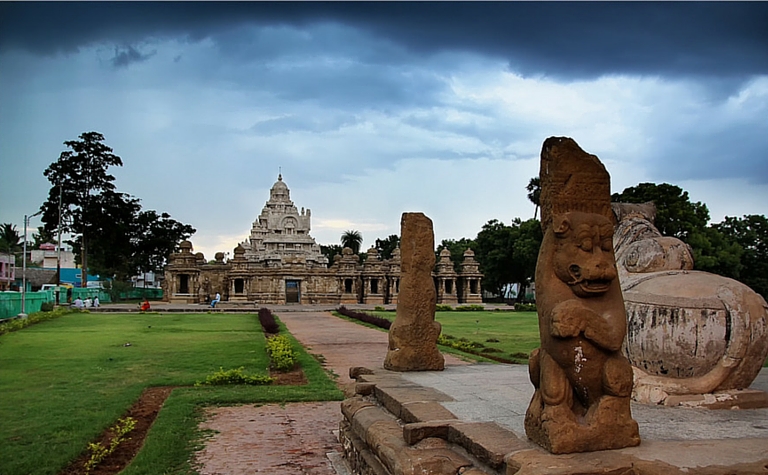
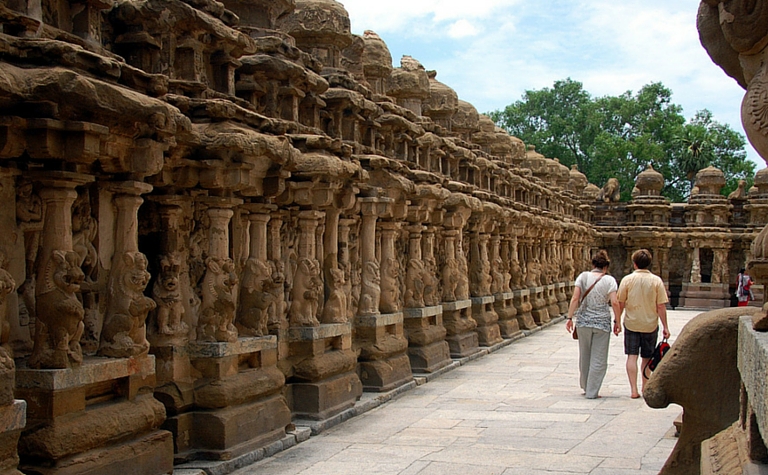
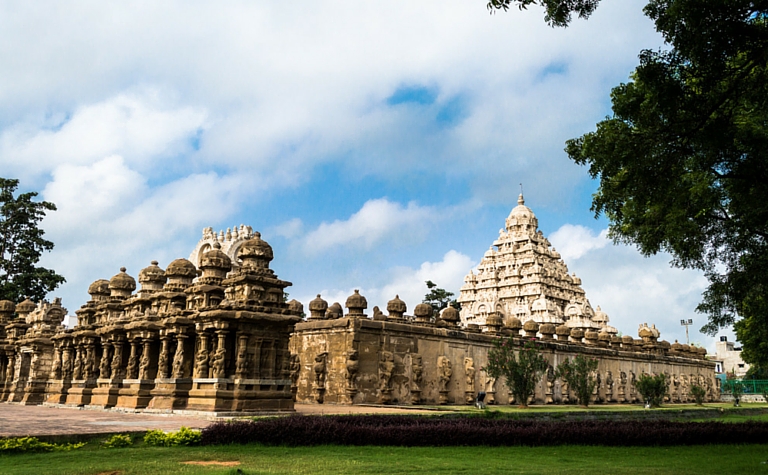
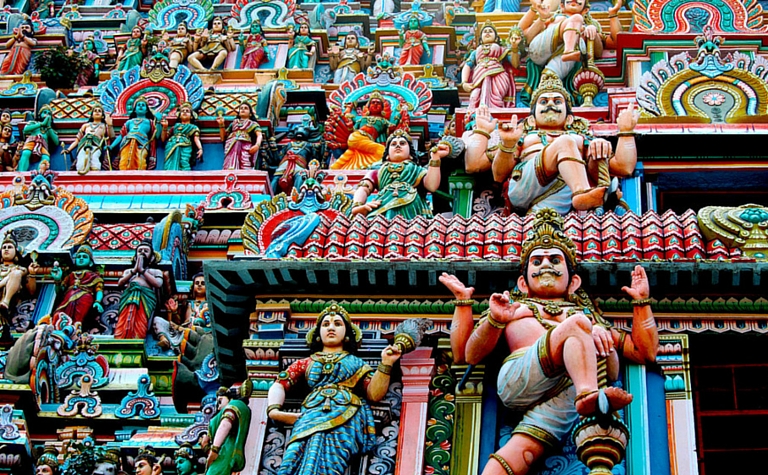
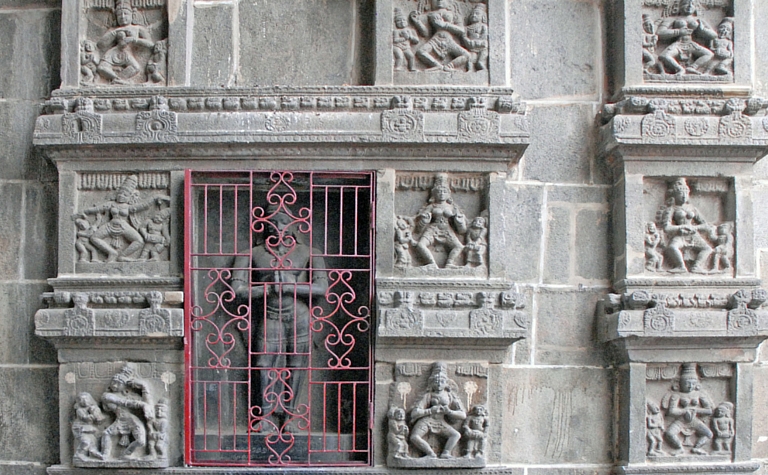
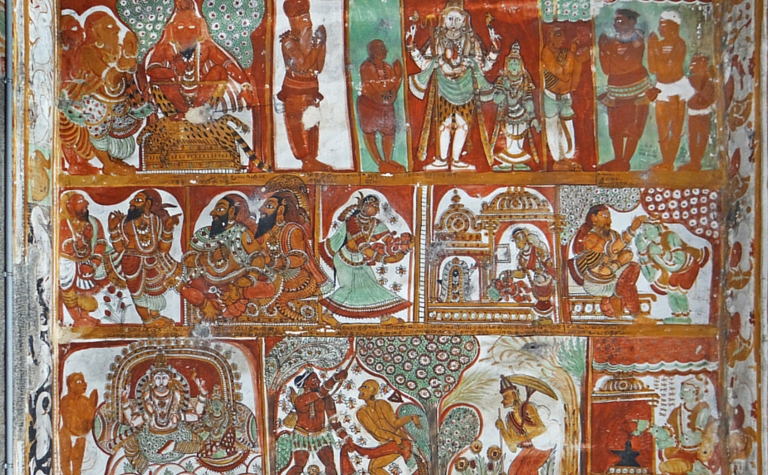
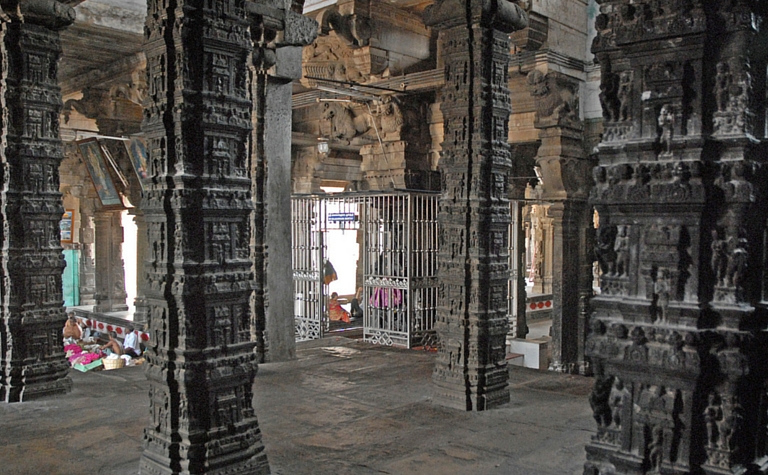
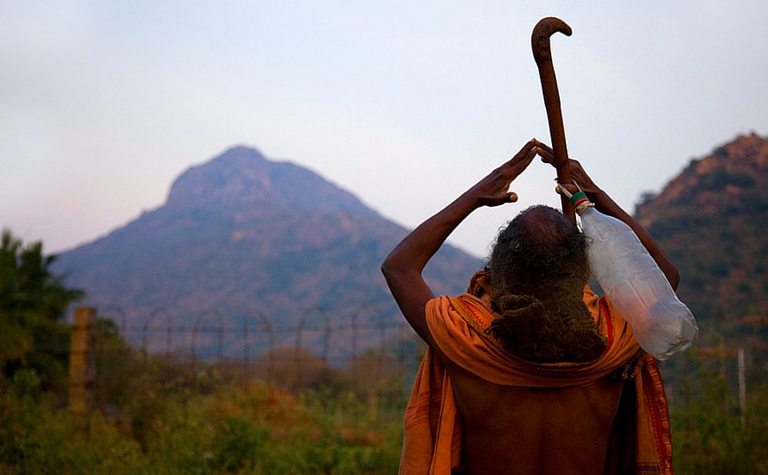
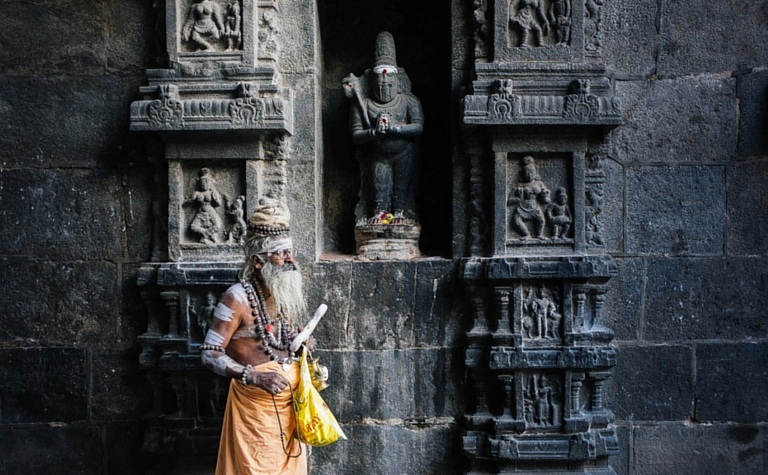
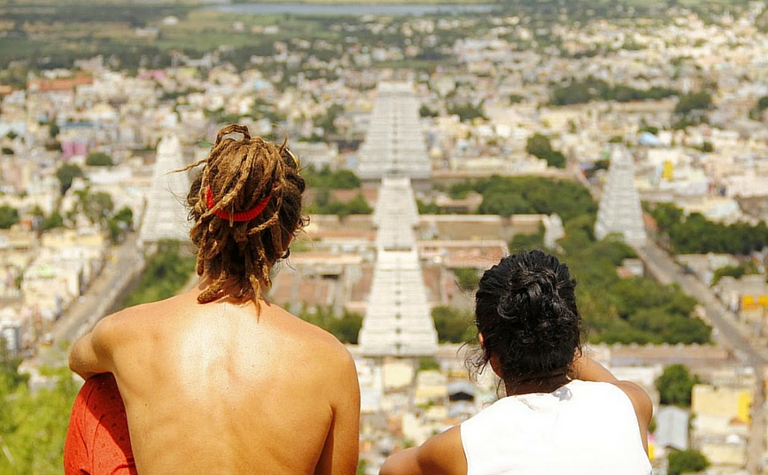
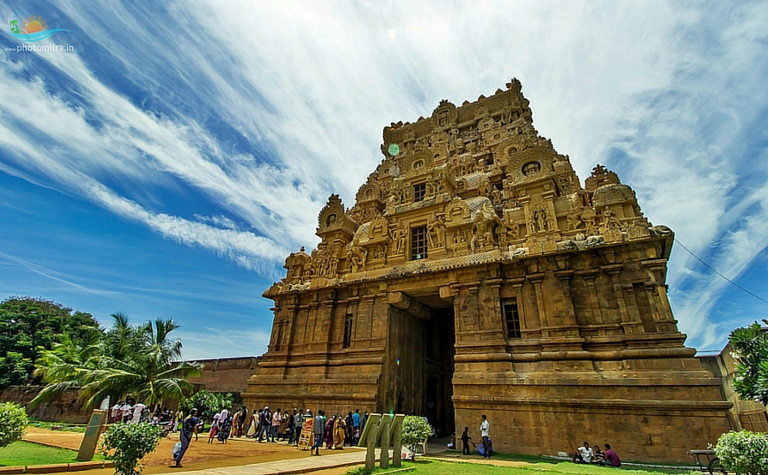
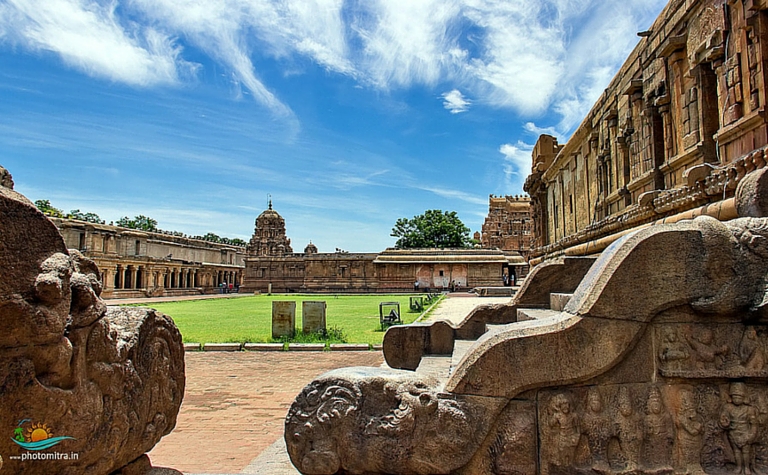

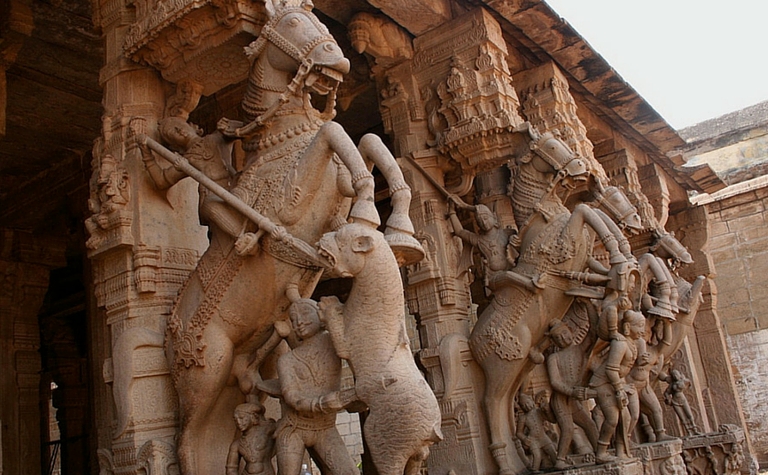
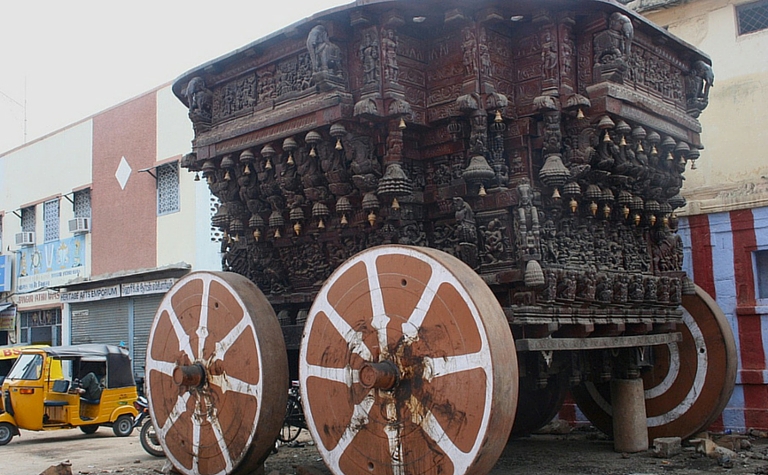

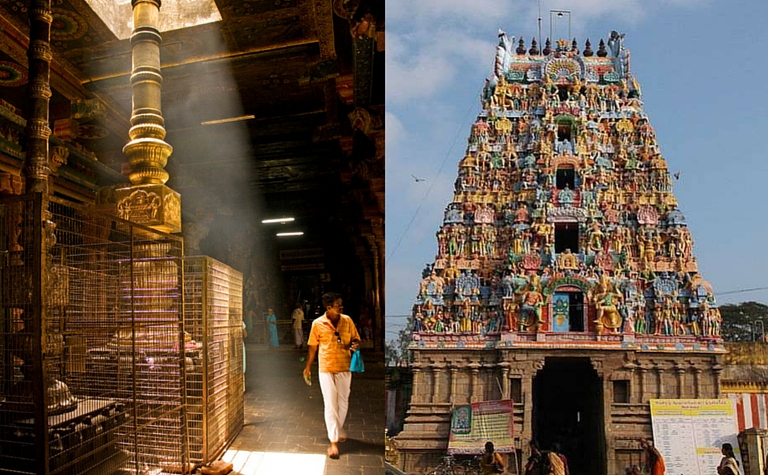
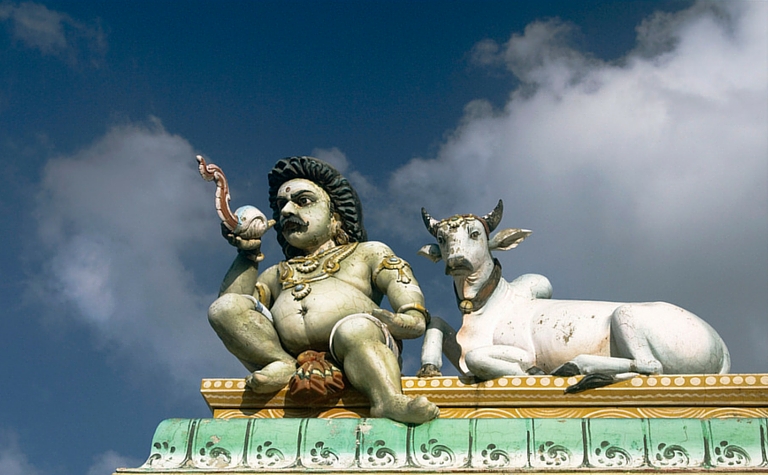
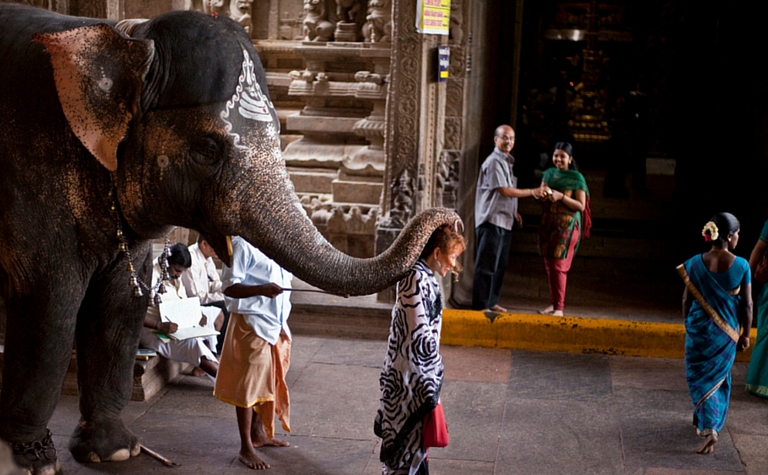
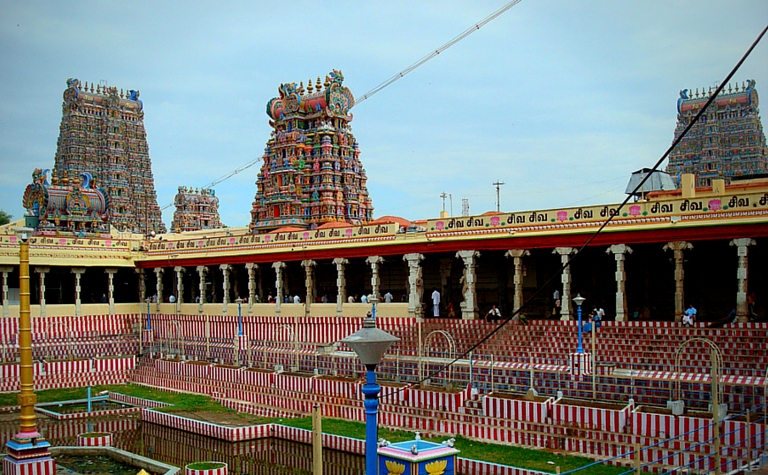
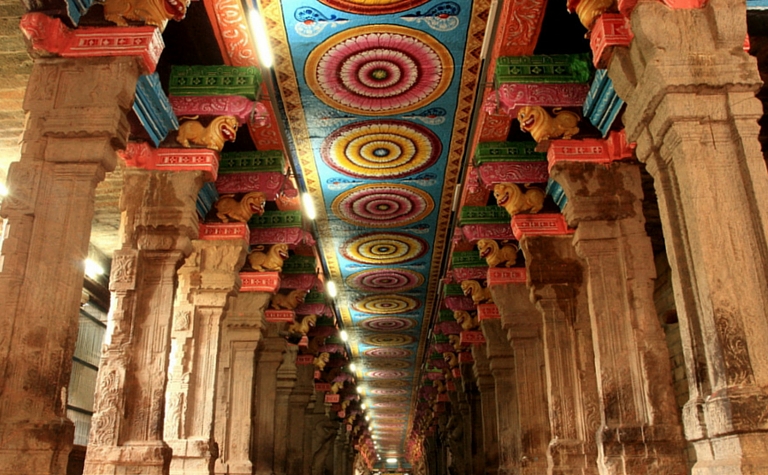

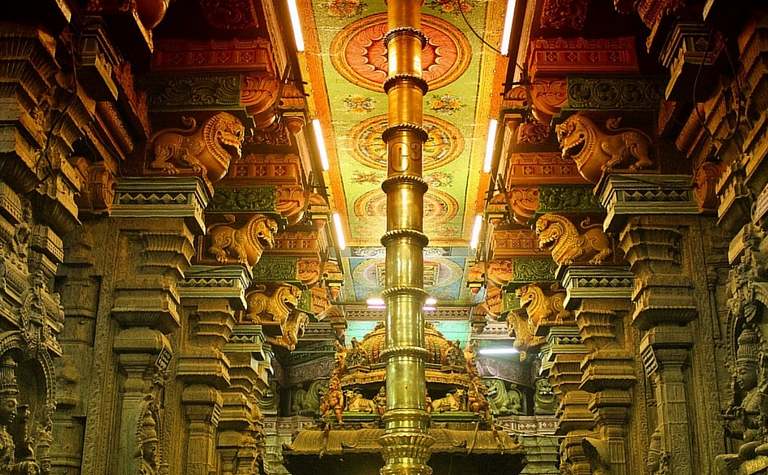
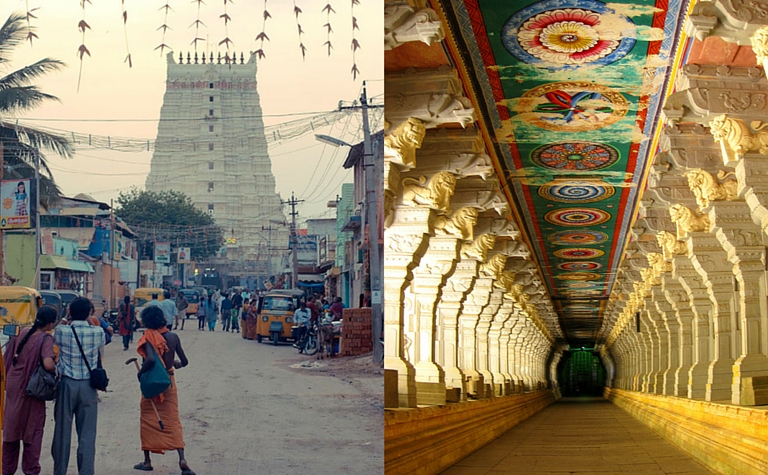
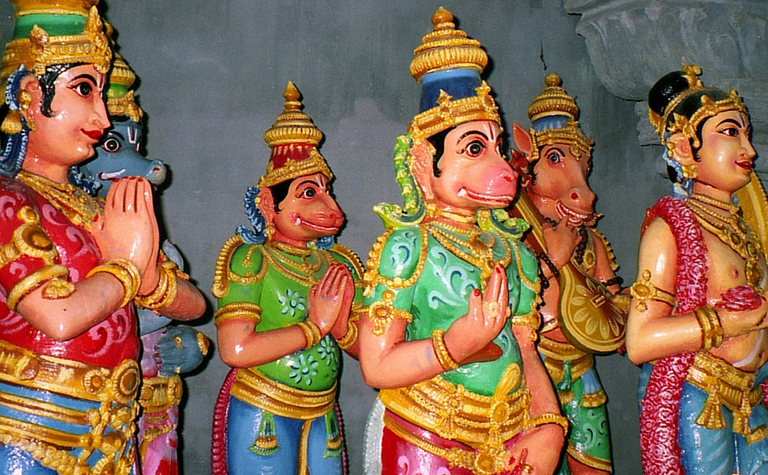
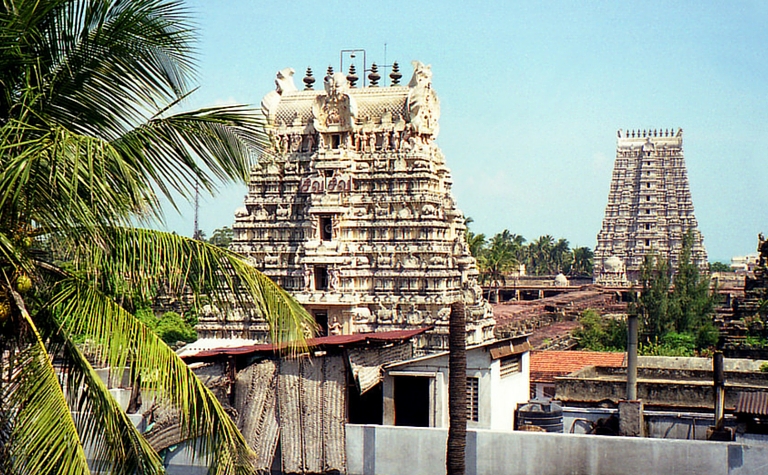
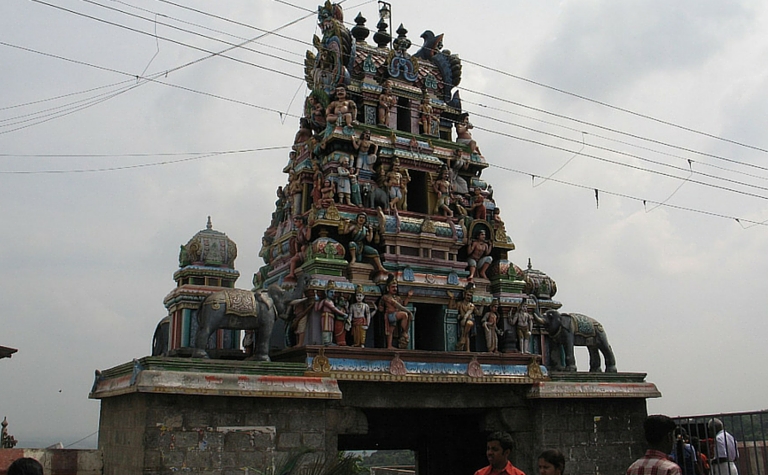
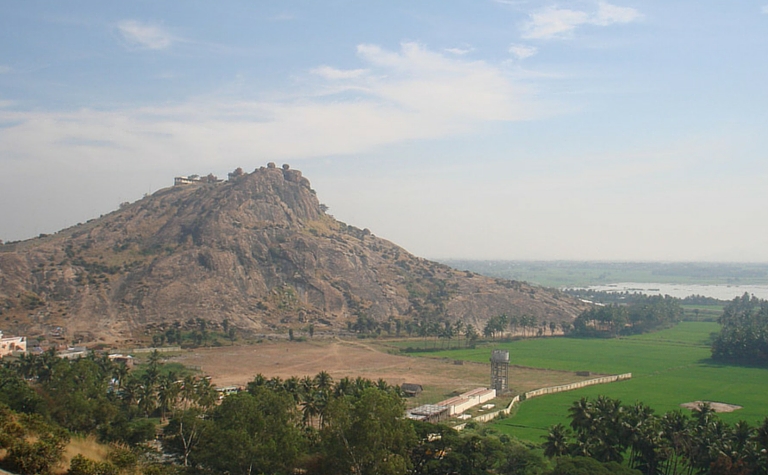
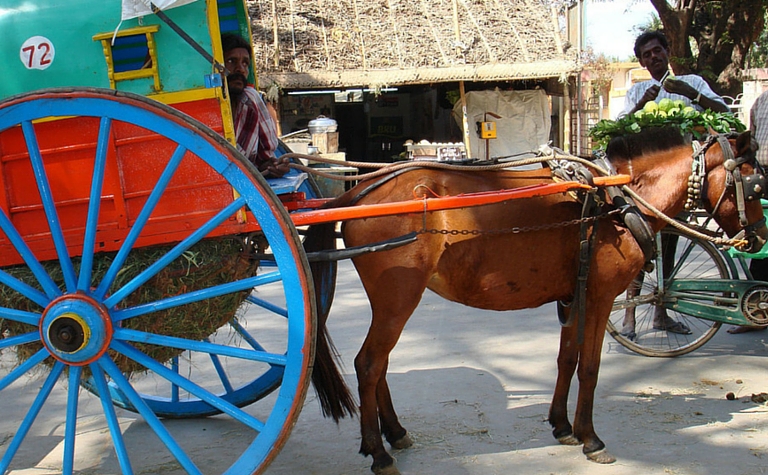
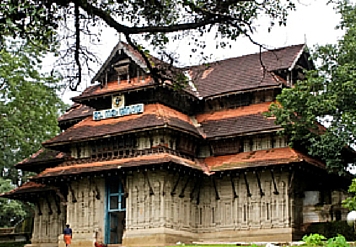
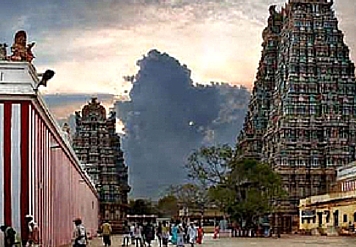
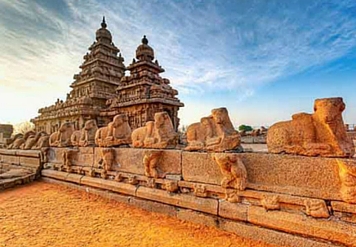

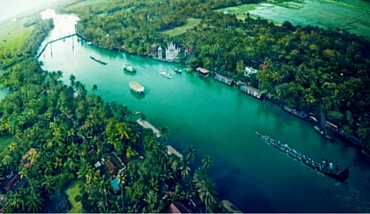
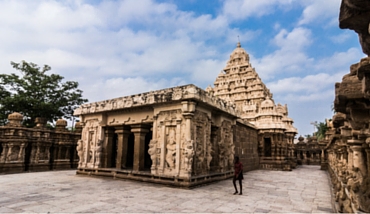
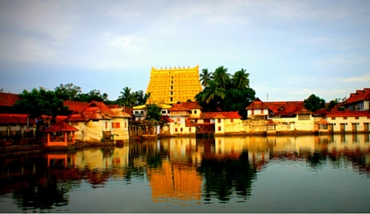
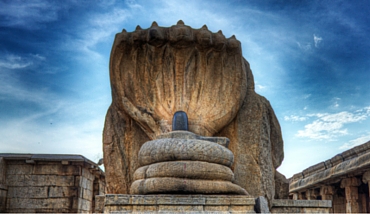


Swathi
The Top 10 Temples and most interesting detail is presented in the article. I enjoyed reading this article. Nice list.
Lakshmi
Top 10 famous temples should be cover with in a week